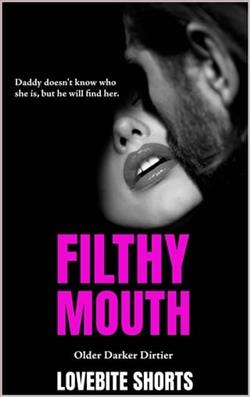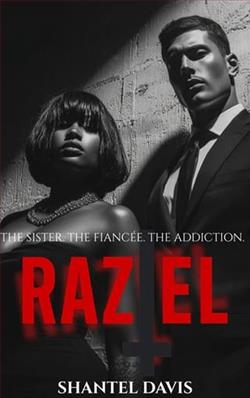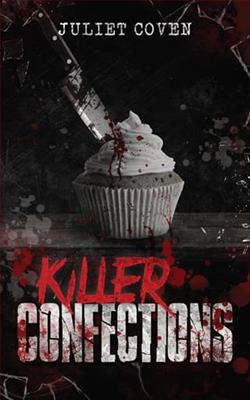Page 188 of Let the Game Begin
“My brother and I,” I answered quickly, not mentioning Selene’s name again so as not to draw his attention to her. “I solved the last one, and it was the most complex, I think.” I looked cautiously at him, trying to figure out what he was thinking, but Dr. Lively was busy writing down everything I’d just said in his notebook. For a moment, it was like a flashback in a movie and I was seeing the same scene, only years before.
He sighed and adjusted his glasses on the bridge of his nose, darting a glance at me.
“When you were in high school, you claimed that there were men lurking outside in a pickup truck,” he said, bringing up an admission I’d made as a teenager. I took a step back just as he calmly interlaced his fingers and rested his wrists on the wooden surface of the desk, still looking at me all the while.
“You said that those men were kidnapping children, locking them in their truck, and raping them.” He sighed and lowered his gaze to the notebook still open in front of me. He reached out and dragged it under his own nose to get a better look at my drawing.
“But there was no pickup truck and no dangerous men,” he concluded, fixing me with a skeptical stare.
“What are you trying to say?” I asked in an incredulous whisper. He couldn’t possibly think I was lying. He couldn’t possibly think that I…
“My brother’s life was in danger, Dr. Lively. He nearly died!” I raised my voice and felt the uncontrollable tremors start in my muscles. I advanced on him in a blind rage. But he did not give up.
“Where were you when these riddles were delivered to your home?” He took his pen, turning it over in his fingers as he leaned back in his chair. I couldn’t believe he would actually ask me that question. I looked at him in shock and waves of disappointment and anger hit me right in the chest.
“Stop it! Stop insinuating this bullshit!” I grabbed the glass pen holder and hurled it violently against the wall.
I needed to vent some of this feeling. I was no longer in control of my impulses and my reason, as usual, had fled, abandoning me to my demons.
My tachycardia intensified, and I began to sweat. My temples pulsed painfully, my clothes were suffocating, my hands shook. Anger was an involuntary energy that surged through my body and pushed inside my head, searching for an escape route.
“Neil, part of my job is outlining the challenges that may arise following the kind of trauma you experienced at a very delicate age.” He resumed speaking like I hadn’t just obliterated one of the decorative objects on his fancy desk. Then, he leaned toward me, resting his elbows on the wooden surface of said desk. “In your case, I diagnosed you with OCD at age eleven and IED at the age of fourteen,” he said as though he were a medical robot designed to talk and talk and talk some more…
I recalled the day I had been diagnosed with intermittent explosive disorder, or IED. It happened after I had a violent episode at school. I’d punched a boy after a minor argument, and I’d completely lost control. During my adolescence, that kind of episode got more and more frequent as well as more extreme. Dr. Lively instructed me to partake in cognitive behavior therapy and to take various medications.
As time passed, I learned to recognize the warning signs of an episode: the tremor in my hands, the sudden-onset heart palpitations, the feeling of pressure inside my head. But although I was aware of these problems, I continued to deny them and eventually refused to go back to therapy.
“Where were you when you received these puzzles?” He looked up at me, and I pushed the memories away to refocus on our conversation.
“You’ve known me for years.” I was so tired…my legs crumpled involuntarily, forcing me to take a seat in one of the chairs next to the desk. My brain felt like it had been overloaded with information, my psyche nothing more than a blocked and damaged electrical network capable of nothing but confusion.
“Yes, Neil, I’ve known you for years,” he said, taking a deep breath before he turned back to my drawing and frowned reflectively.
I had drawn a pentagram.
A perfect pentagram, a symbol of magic and occultism.
Spirit: top point.
Air: upper left.
Water: upper right.
Earth: lower left.
Fire: lower right.
The circle that enclosed it all represented the gods, the divine embrace of everything that existed inside the pentagram. It also represented the continuity of those forces, flowing forever, never stopping, involving all energies. Benign, for some people. Evil for others.
Fortunately, Dr. Lively didn’t ask me any questions about it.
“When you were a teenager, I diagnosed you with Dissociative Identity Disorder.” He closed the notebook and took off his glasses, setting them down on the book’s dark cover.
“You told me about yourself, about the Boy, and about the conversations that took place between you…” He turned his gaze on me again and a sudden, powerful headache had me clutching my forehead as his words fluttered around aimlessly in my brain.
“As you well know, the primary characteristic of that disorder is the presence of two or more personalities which manifest not just explicitly but via a discontinuity with one’s sense of self.” I had heard this speech over and over again, but I had excised it from my brain in order to live the version of normal life that I created for myself.
Dr. Lively paused, his expression probing. Maybe he was trying to make sure that I was listening to him? Then, he went on, “People with this disorder—people like you—can feel depersonalized. They observe themselves as if from outside, doing atypical things and relating to their loved ones as if they were strangers or not real people at all. Sometimes, they may be convinced that their body is different, like that of a child or they may hear internal conversations between different states of personality. Sometimes, when a patient is not aware of this kind of condition or does not accept that they are affected by it, the voices of the other identities can address them or comment on their behavior.”















